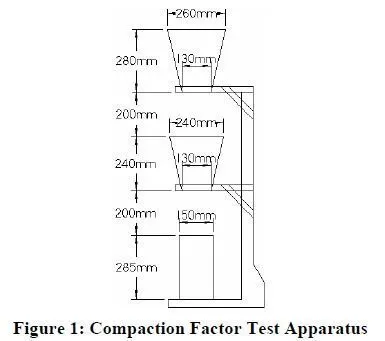The penetration test for segregation (Bartos, Sonebi, and Tamimi 2002; Bui, Akkaya, and Shah 2002) measures the penetration resistance of highly fluid and self-compacting concretes.
The test apparatus consists of a hollow cylindrical penetration head that is allowed to sink under its own weight into a sample of concrete. The penetration head has an inside diameter of 75 mm, a thickness of 1 mm, and a height of 50 mm. The mass of the penetration head is 56 grams. A rod attached to the penetration head slides through a frame, which includes a graduated scale for measuring penetration depth. Several different dimensions for the concrete container have been used by different researchers. Bui, Akkaya, and Shah (2002) set the apparatus on top of an Lbox with cross sectional dimensions of 200 mm by 200 mm (instead of the more commonly used dimensions of 100 mm by 200 mm). The container must be placed on level ground and must not be moved during the test. The concrete, which is not consolidated with vibration or tamping, is allowed to sit for two minutes after being placed into the container. The cylinder is then placed on top of the concrete surface and the depth of penetration is measured after 45 seconds. This measurement is performed at a total of three different locations of the concrete surface. When the concrete mixture is susceptible to segregation, the coarse aggregate particles will settle from the top surface of the concrete and the penetration depth will increase. If the average depth of penetration is greater than 8 mm, the concrete is considered to have poor segregation resistance.
The test method is simple and inexpensive; however, little data exists to relate test results to actual field performance.
